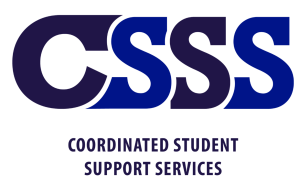Juice – fruit & vegetables in a glass

Juice – fruit & vegetables in a glass
Most children love juice. It’s sweet, cool and colorful. More than 90 per cent of children drink juice by their first birthdays. Parents believe it is a natural, healthful food. It’s true that most 100 per cent fruit juices contain some minerals and naturally contain vitamin C. Vegetable juices are also high in Vitamin A.
What Age to Serve Juice
It is recommended that fruit juice be served to children when they are able to drink from a cup – sometime between seven and nine months of age. Before this time, breast milk or formula is the only fluid they need for good health. Juice should not be offered from a bottle, but rather, the child should be encouraged to use a cup.
Can children drink too much juice? Fruit juice is increasingly available, in greater variety and at a reasonable cost. One result of this is that if often replaces water as a thirst quencher for children. Some young children drink as much as 1 1/2 to 4 cups daily. In many cases a child’s intake of more nutritious foods such as milk or fruit (which contains fiber and additional nutrients) may be reduced. If this is true, children do not gain weight normally. Children can also suffer from stomach pain, gas and diarrhea when they drink too much juice. Juice is “good food” but it is not more essential than any other food. Dr. William Klish of the American Academy of Pediatrics Committee on Child Nutrition has stated, “A child could be perfectly healthy not ever having fruit juice.” So follow that rule of good nutrition – moderation. Four to eight ounces per day is a good guideline for children.
What About Fruit Drinks?
Because these beverages are made of artificial flavors, sugar and water, they offer minimal nutrients to the children. These drinks should not be used to replace water or milk or even 100 per cent fruit juice. Manufacturers may add a small amount of fruit juice or vitamins and minerals to the drinks to encourage you to purchase them. Fruit drinks or ades, sports drinks, soda pop and most punches are not creditable under the Child and Adult Care Food Program. It is recommended that they not be served on a regular basis to children in child care facilities.
Buying juice can be tricky. Only 100 per cent fruit juice is creditable in the Child and Adult Care Food Program. Read labels carefully. Some may say “100 per cent Natural” or “Contains Fruit Juice,” but neither may be creditable. Be sure to look for the words “100 per cent fruit juice” or “Made from 100 per cent fruit juice concentrate” on the label.
Serving Idea
Juice doesn’t have to be served in a glass. It can be served frozen as a homemade “fruitsicle” or an another all time favorite – gelatin. A creditable gelatin can be made using the following recipe. If you want it credited for your menus, be sure to record it as “100 per cent fruit juice gelatin.”
| Fruit Juice Gelatin | ||
Mix the gelatin with 1/2 cup cold juice. Boil another 1/2 cup juice and add to gelatin mixture. Stir to dissolve. Add remaining juice and stir. Add fruit and stir. Pour into a 9″ x 9″ pan and chill until firm. Makes eight 1/2 cup servings. Creditable as 1/2 cup fruit/vegetable. *Do not use fresh pineapple or kiwi fruit as the gelatin will not firm up. |
||





